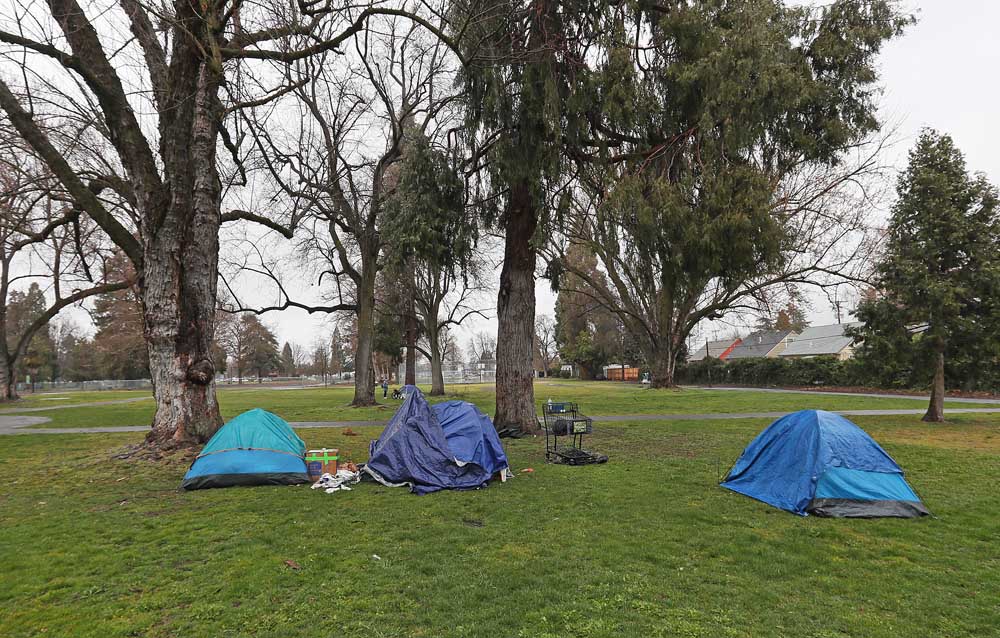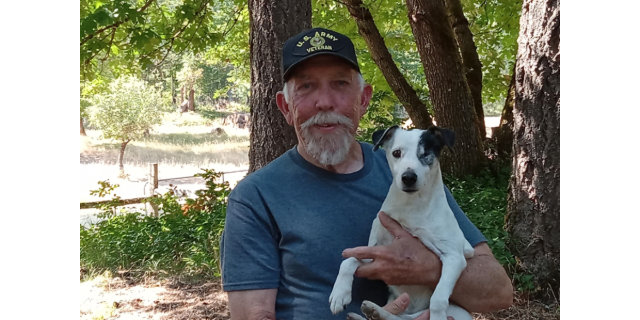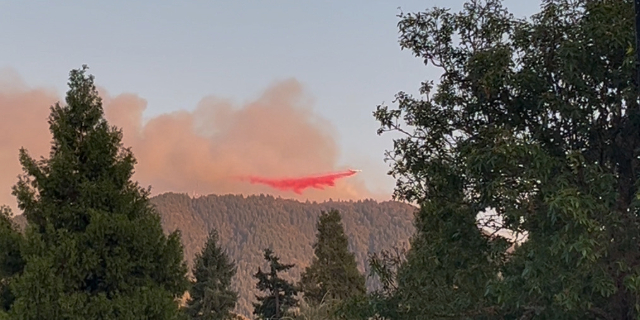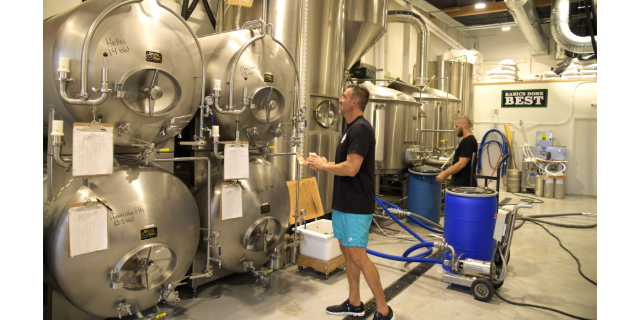Most Oregonians feel safe in natural areas, differences seen among demographics
Published 6:00 am Wednesday, March 15, 2023

- Tents are set up at Hawthorne Park in Medford. Medford City Council approved an ordinance May 4 that allows police to clear news homeless camps immediately without giving 72-hours notice.
Most Oregonians feel safe in natural areas — parks near their home, nature preserves in their region — but people from certain demographics report feeling less safe than do others.
Trending
These are the results of an Oregon Values and Beliefs Center survey conducted in November among 1,554 respondents.
The number of people who feel unsafe is higher — and more widespread — than Amaury Vogel, the center’s associate executive director, expected it to be.
At parks near their house or neighborhood, 77% of respondents said they felt safe, 17% felt unsafe, 3% were unsure, and 2% said they’d never gone.
Trending
At nearby nature preserves — defined as larger natural areas, including state parks, national forest and Bureau of Land Management territory — 79% of respondents felt safe, 12% felt unsafe, 4% were unsure, and 4% said they’d never gone.
According to the study, people of color feel less safe in both parks and natural areas than do white people, and women feel less safe than men. When it comes to visiting their neighborhood parks — but not to visiting nature preserves — urban residents feel less safe than do their rural and suburban counterparts. And younger people — especially, 18- to 29-year-olds — feel less safe in those areas than do older adults.
“The older end of the spectrum — they feel pretty darn safe,” Vogel said, “but younger Oregonians are saying they don’t feel safe.”
People with children feel less safe in natural areas than do those without them — a result that jumped out at Vogel.
“You want kids to have exposure to nature and time outside, and so if parents are saying they don’t feel safe in parks, and they’re not bringing their kids to parks, that’s a pretty big concern,” she said.
The center, a nonprofit, nonpartisan research organization, conducts a monthly survey asking a representative sample of Oregonians about a range of topics, such as voting, justice reform and child care.
The safety-in-natural-areas survey marks the first time the center has focused on the topic.
The center had noticed two trends emerging in previous surveys.
In recent years, people of color sometimes reported feeling unsafe or unwelcome in natural areas, Vogel said.
Some reported experiencing threats in those areas and had started avoiding them.
A survey that the center conducted in October 2021 focused on race-based harassment and hate crimes against Asian Oregonians. Respondents were asked whether they had experienced prejudice or threats and, if so, whether the incidents impacted how they felt in public. One question asked whether they feared communal places such as stores, restaurants and parks.
The center’s surveys have also noted a rise in respondents saying they don’t feel safe in natural areas because of an increase in homeless campers and expressing concern about associated behavior, such as littering and drug use. Vogel said Oregonians tend to care about environmental quality and are unhappy with trash and pollution.
The city of Medford conducts a regular survey gauging people’s overall satisfaction with park maintenance. In 2020, satisfaction was at 81%; in 2021, 78%; in 2022, 89%.
The Bear Creek Greenway — a multi-use trail stretching 20 miles between Ashland and Central Point — tends to drag down customer satisfaction numbers, said Rich Rosenthal, the Medford parks director.
“We ask about every single park, and the Greenway consistently is in the 30s,” he said.
Last year, a survey for the Envision Bear Creek project with more than 2,200 respondents indicated that folks who frequent the Greenway feel safe enough, while those who rarely, if ever, use the paved trail choose not to because they feel uneasy.
“The data shows that most of it’s perception as opposed to actual incidents,” said Michael Black, the Ashland parks and recreation director.
People with dim views of the Greenway point to safety concerns, many related to homeless encampments, as well as problems with garbage and spotty upkeep. A discussion among local officials is underway about how best to manage the trail and pay for its maintenance.
The Oregon Values and Beliefs Center did not ask respondents open-ended questions about what specifically worried them in natural areas — an oversight that Vogel said will be addressed the next time the center asks about the topic.
“Especially because of how this turned out, it’s important to track that stuff over time,” she said.









